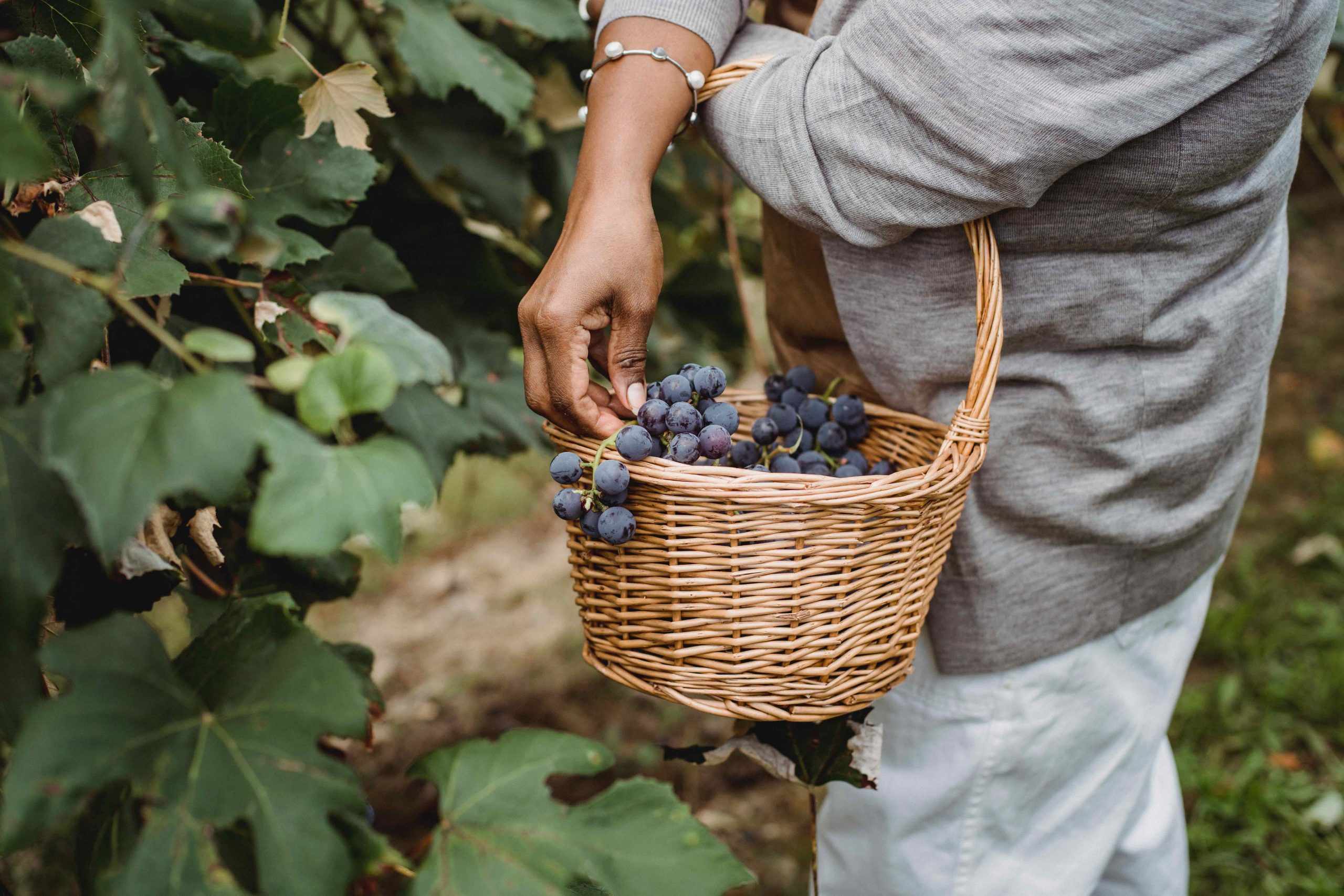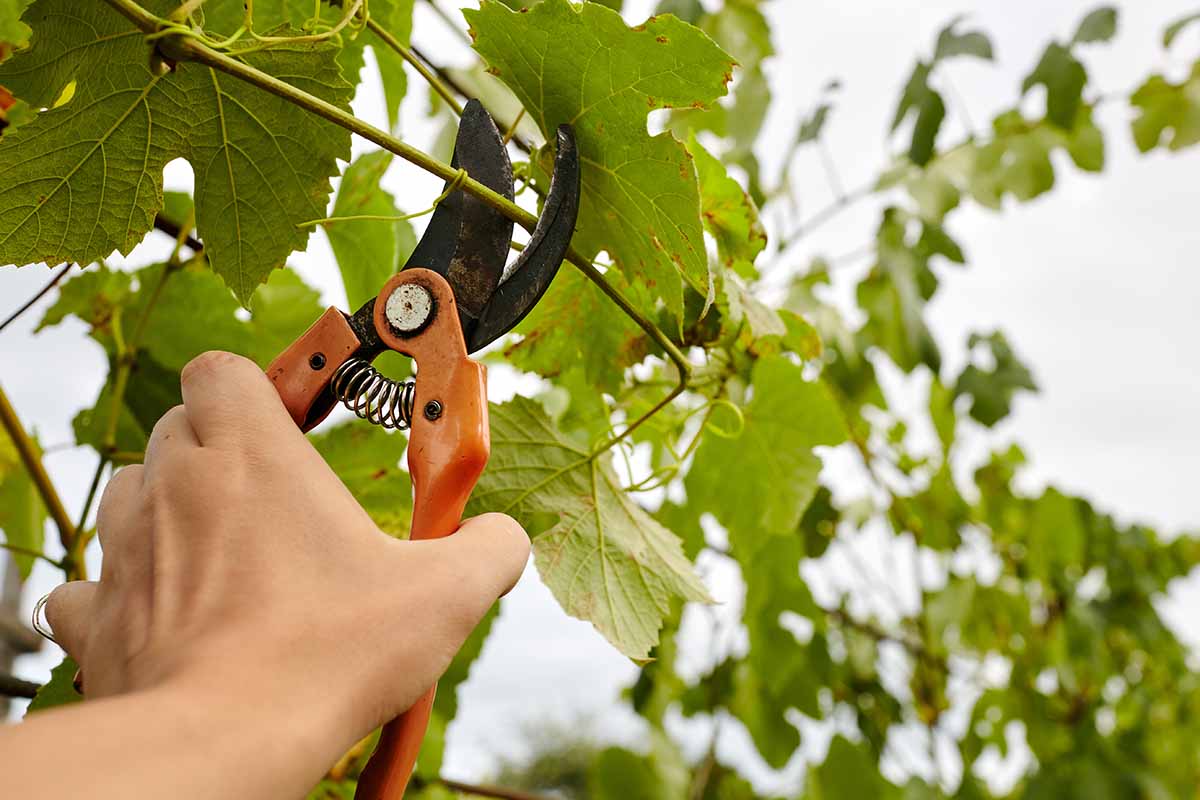Home>Types of Gardening>Edible Gardening>What Is Cultivation Of Grapes Called


Edible Gardening
What Is Cultivation Of Grapes Called
Published: January 26, 2024
Learn about the cultivation of grapes, also known as viticulture, and how to incorporate it into your edible gardening practices. Discover tips and techniques for growing delicious grapes at home.
(Many of the links in this article redirect to a specific reviewed product. Your purchase of these products through affiliate links helps to generate commission for Chicagolandgardening.com, at no extra cost. Learn more)
Table of Contents
Introduction
Grapes have held a significant place in human culture for thousands of years, revered for their luscious taste and their role in winemaking. The cultivation of grapes, known as viticulture, encompasses a rich tapestry of history, techniques, and traditions. From the sun-drenched vineyards of France to the rolling hills of Napa Valley, grape cultivation is a timeless art form that continues to captivate and inspire.
This article aims to provide a comprehensive exploration of grape cultivation, delving into its historical roots, the factors that influence its success, and the techniques employed to ensure bountiful harvests. Whether you're a budding viticulturist or simply a lover of fine wine and succulent grapes, this journey into the world of grape cultivation promises to be both enlightening and enriching.
Grape cultivation is a fascinating blend of science, art, and tradition, and by understanding its intricacies, we can gain a deeper appreciation for the fruits of the vine. So, let's embark on this journey through the vineyards, where we'll uncover the secrets of grape cultivation and gain a newfound admiration for this time-honored practice.
Understanding Grape Cultivation
Grape cultivation, or viticulture, is the art and science of growing grapes for various purposes, including winemaking, fresh consumption, and dried fruits. It involves a deep understanding of the grapevine’s life cycle, environmental requirements, and the application of horticultural practices to ensure healthy vine growth and abundant fruit production.
At its core, grape cultivation revolves around the grapevine, a woody perennial that belongs to the Vitis genus. The two primary species used in commercial grape production are Vitis vinifera, which is renowned for wine production, and Vitis labrusca, commonly used for table grapes and juices. Understanding the characteristics of these species, including their growth habits, disease resistance, and fruit quality, is essential for successful cultivation.
Furthermore, grape cultivation extends beyond the simple act of planting and tending to vines. It encompasses an array of considerations, including soil composition, climate suitability, pest and disease management, and pruning techniques. Each of these factors plays a crucial role in determining the success and sustainability of grape cultivation endeavors.
By delving into the intricacies of grape cultivation, enthusiasts and professionals alike can gain a profound appreciation for the delicate balance of nature and human intervention required to yield a bountiful grape harvest. Whether in the rolling hills of a vineyard or the backyard garden, the art of grape cultivation beckons us to immerse ourselves in the timeless rhythm of the grapevine’s growth and the anticipation of its flavorful yield.
History of Grape Cultivation
The history of grape cultivation is as old as civilization itself, with evidence of grape domestication dating back to ancient Mesopotamia around 6000 B.C. The grapevine’s significance transcends mere sustenance, as it became intertwined with religious rituals, trade, and the production of revered beverages such as wine. The ancient Egyptians, Greeks, and Romans revered the grape and attributed its cultivation to divine origins, further elevating its status in human culture.
The spread of grape cultivation across the Mediterranean by Phoenician traders and the subsequent influence of Greek and Roman viticulture techniques laid the foundation for modern-day grape growing practices. The Roman Empire, in particular, played a pivotal role in disseminating viticultural knowledge throughout its vast territories, leading to the widespread cultivation of grapes across Europe.
During the Middle Ages, monasteries in Europe became centers of grape cultivation and winemaking, preserving and refining the techniques inherited from the Romans. The monks’ meticulous records and experimentation contributed to the advancement of viticultural practices, ensuring the continuity of grape cultivation through the tumultuous periods of history.
The arrival of European settlers in the Americas brought grape cultivation to the New World, where it thrived in regions such as California, Chile, and Argentina. The subsequent expansion of grape cultivation to other parts of the world, including Australia, South Africa, and New Zealand, further enriched the global tapestry of viticulture.
Today, the legacy of grape cultivation continues to evolve, with technological advancements, scientific research, and sustainable practices shaping the modern grape industry. From the ancient terraced vineyards of the Mediterranean to the sprawling estates of the New World, the history of grape cultivation stands as a testament to humanity’s enduring relationship with this noble fruit.
Factors Affecting Grape Cultivation
Grape cultivation is profoundly influenced by a myriad of factors, each playing a crucial role in the successful growth and development of the grapevine. Understanding and managing these factors is essential for ensuring the health of the vines and the quality of the grape harvest.
- Climate: The climate exerts a significant impact on grape cultivation, influencing the grapevine’s growth, fruit development, and overall quality. Factors such as temperature, sunlight exposure, and precipitation patterns play pivotal roles in determining the suitability of a region for grape growing. Different grape varieties thrive in specific climatic conditions, with some requiring warm, Mediterranean-like climates, while others are more resilient to cooler temperatures.
- Soil: The composition and characteristics of the soil profoundly affect grape cultivation. Factors such as drainage, nutrient content, pH levels, and soil structure influence the vine’s root development, water retention, and nutrient uptake. Different grape varieties exhibit varying preferences for soil types, with some thriving in well-drained, rocky soils, while others prefer loamy or sandy substrates.
- Topography: The physical features of the land, including elevation, slope, and aspect, impact grape cultivation. Sloping terrain aids in water drainage and sunlight exposure, while elevation influences temperature variations and microclimates within a vineyard. Understanding the topographical nuances of a site is crucial for optimizing grapevine growth and fruit ripening.
- Disease and Pest Management: Effective disease and pest management practices are essential for safeguarding grapevines from potential threats. Fungal diseases, such as powdery mildew and downy mildew, as well as insect pests, can significantly impact grape yields and quality. Employing integrated pest management strategies and disease-resistant grape varieties can mitigate these challenges.
- Pruning and Training: The techniques employed in pruning and training grapevines directly influence their growth habits, fruit production, and overall vineyard management. Pruning regulates vine vigor, controls crop load, and shapes the canopy to optimize sunlight exposure and airflow, thereby impacting grape quality and disease susceptibility.
By comprehensively addressing these factors and adapting viticultural practices to suit specific environmental conditions, grape growers can maximize the potential of their vineyards and produce grapes of exceptional quality, ensuring the continued legacy of grape cultivation for generations to come.
Techniques and Methods of Grape Cultivation
Grape cultivation encompasses a diverse array of techniques and methods that are meticulously applied to nurture healthy vines and achieve optimal fruit quality. From vineyard establishment to harvest, a series of practices are employed to ensure the successful cultivation of grapes, whether for winemaking, fresh consumption, or dried fruit production.
- Site Selection and Preparation: The process begins with meticulous site selection, considering factors such as climate, soil composition, and topography. Once the site is chosen, soil preparation, including proper drainage and nutrient management, is crucial for establishing a healthy vineyard foundation.
- Variety Selection: Choosing the right grape variety for a specific growing region is paramount. Factors such as climate suitability, disease resistance, and intended use (wine, table grapes, or raisins) guide the selection process.
- Planting and Trellising: Grapevines are typically propagated from cuttings and planted in rows, with careful attention to spacing and orientation. Trellising systems, such as the popular vertical shoot positioning (VSP) and Scott Henry trellises, are employed to support vine growth and optimize sunlight exposure.
- Irrigation and Water Management: In regions with limited rainfall or during dry periods, irrigation is essential for sustaining vine health and promoting steady fruit development. Efficient water management practices, including drip irrigation and soil moisture monitoring, are employed to avoid water stress and ensure vine vitality.
- Pruning and Canopy Management: Pruning plays a pivotal role in shaping the vine’s growth and regulating fruit production. Techniques such as spur pruning and cane pruning are utilized to maintain vine balance and optimize fruit quality. Canopy management, including leaf thinning and hedging, enhances sunlight penetration and airflow within the vine canopy.
- Pest and Disease Control: Integrated pest management (IPM) strategies are implemented to mitigate the impact of pests and diseases on grapevines. This approach combines biological, cultural, and chemical control methods to minimize risks while preserving environmental balance.
- Harvesting and Post-Harvest Handling: The timing of harvest is critical, as it directly influences grape flavor, sugar content, and acidity. Once harvested, grapes are carefully handled to preserve their quality, whether destined for winemaking or fresh consumption.
By integrating these techniques and methods into their viticultural practices, grape growers can nurture thriving vineyards and produce grapes that embody the unique terroir of their growing regions, perpetuating the timeless art of grape cultivation.
Conclusion
The world of grape cultivation is a captivating blend of tradition, science, and artistry, spanning millennia of human history and encompassing a rich tapestry of techniques and practices. From the ancient vineyards of Mesopotamia to the sprawling estates of modern viticulture, the cultivation of grapes has evolved into an intricate and revered practice, deeply rooted in culture and tradition.
Throughout history, grape cultivation has transcended geographical boundaries, adapting to diverse climates and terrains, and leaving an indelible mark on the global agricultural landscape. The resilience of the grapevine and the ingenuity of viticulturists have fostered the development of sustainable practices, technological advancements, and the preservation of heirloom grape varieties, ensuring the continuity of this time-honored tradition.
As we reflect on the multifaceted aspects of grape cultivation, from the influence of climate and soil to the meticulous techniques of pruning and canopy management, we gain a profound appreciation for the delicate balance required to cultivate exceptional grapes. The dedication of grape growers, winemakers, and enthusiasts alike has propelled the industry forward, yielding a diverse array of grape products that delight palates and inspire connoisseurs around the world.
Looking ahead, the future of grape cultivation holds promise, as sustainable practices, technological innovations, and a renewed focus on environmental stewardship shape the trajectory of the industry. The timeless allure of the vineyard, the anticipation of each harvest, and the celebration of the grape’s bounty continue to unite people across cultures and generations, fostering a deep connection to the land and its fruits.
In essence, the cultivation of grapes remains a testament to the enduring relationship between humanity and the natural world, a celebration of the earth’s generosity and the boundless creativity of those who tend the vines. As we raise a glass to the fruits of the vine, we honor the legacy of grape cultivation and the profound impact it has had on our lives, our traditions, and our collective heritage.





